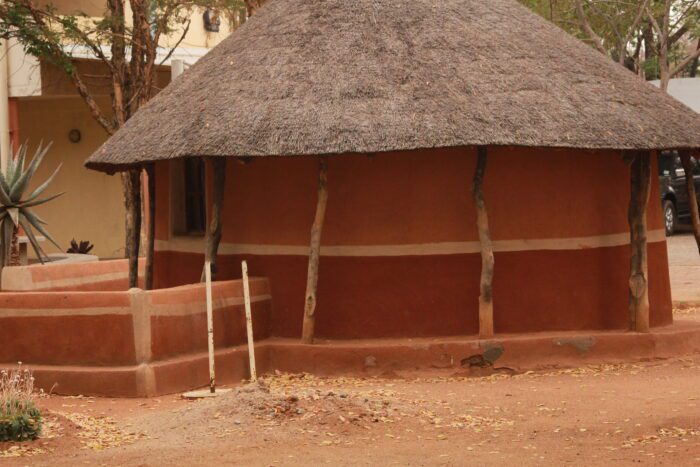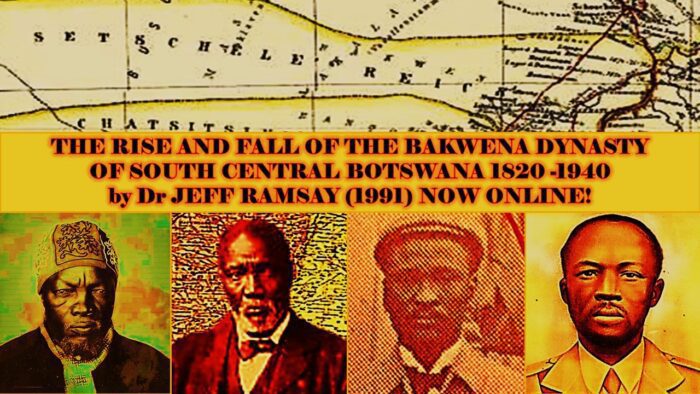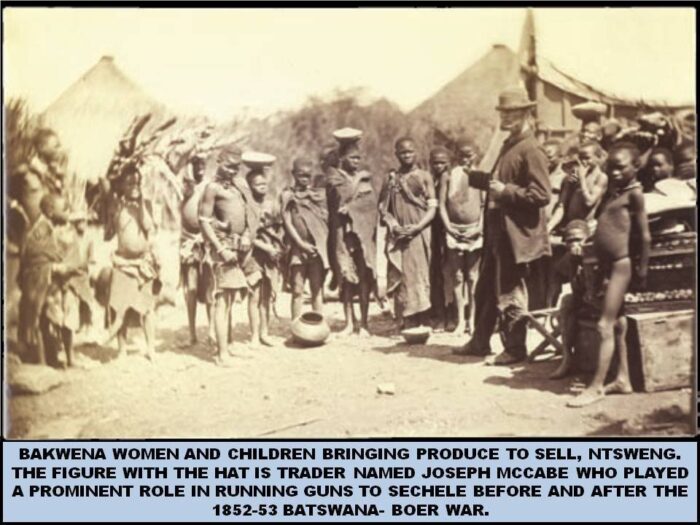The Setswana people, also known as the Tswana, are a Bantu ethnic group that has played an important role in the history and culture of southern Africa. The Setswana language is spoken by over four million people in Botswana, South Africa, and Namibia, making it one of the most widely spoken languages in the region. The Setswana people have a rich cultural heritage, expressed through their music, dance, storytelling, and other traditions.
The history of the #Setswana people is complex and multifaceted, with several theories and interpretations. It is widely accepted that the Setswana people originated in central Africa and migrated southwards in the early 14th century, settling in what is now Botswana. They gradually expanded their territory by conquering neighboring tribes and establishing powerful chiefdoms, including the #Bangwaketse, the #Bangwato, and the #Bakwena.
The Setswana people’s traditional social organization is based on a patrilineal system, where descent and inheritance are traced through the male line. The Setswana people were predominantly pastoralists, but also engaged in subsistence agriculture and trade. The Tswana society was characterized by the existence of class distinctions based on age, gender, and social status, with chiefs and aristocrats enjoying significant power and influence.
In the 19th century, the Setswana people were confronted with a new threat in the form of the Zulu Empire under King Shaka. The Zulu were a powerful military force and were able to conquer many neighboring tribes. However, the Setswana people were able to resist the Zulu invasion and maintain their independence. They were able to resist the Zulu because of their strong central leadership and their ability to mobilize their people quickly in times of war.
The late 19th century saw the Setswana people come under British control with the establishment of the Bechuanaland Protectorate in 1885, which remained under British control until independence in 1966. The British introduced Western education, Christianity, and modern administrative structures, which had a significant impact on the Setswana people. For instance, the education system in Botswana, which is primarily conducted in Setswana, has greatly contributed to the high literacy levels of the country, with an estimated literacy rate of 88.5% in 2021.
Today, the Setswana people continue to maintain their cultural heritage and identity through various means. Setswana music, dance, and storytelling are still widely practiced and celebrated, and the language remains a vital part of Botswana’s national identity. There are also many traditional Setswana crafts, such as basket weaving and pottery, which are valued for their beauty and cultural significance.
There are several places in southern Africa that are of great cultural and historical significance to the Setswana people. One such place is the Mokolodi Nature Reserve, located just outside the capital city of Gaborone, Botswana. The reserve is home to many animals and birds, including the African elephant and the white rhinoceros. Visitors can also learn about traditional Setswana culture and lifestyles by visiting the Kgotla at Mokolodi, where chiefs and other community leaders would gather to discuss important issues.

The National Museum and Art Gallery is located in the capital city of Gaborone, Botswana. The museum is dedicated to preserving and promoting the country’s history, culture, and natural heritage through a wide range of exhibits and educational programs. The museum’s collections include archaeological and ethnographic artifacts, geological specimens, and artworks by Botswana artists. The museum also features informative displays on the country’s flora and fauna, including a display on the Okavango Delta, one of the world’s largest inland deltas.
One of the highlights of the National Museum and Art Gallery is the exhibition on the history and culture of #Botswana’s various ethnic groups, including the Batswana, Kalanga, and San peoples. Visitors can learn about traditional cultural practices, such as basket weaving and pottery making, as well as the history of colonization and resistance in Botswana. The museum also features a collection of contemporary art by Botswana artists, showcasing the vibrant and diverse art scene in the country. The National Museum and Art Gallery is a valuable educational and cultural resource for anyone interested in learning about Botswana’s rich history, culture, and natural heritage.

The Phuthadikobo Museum is a must-visit destination for anyone interested in learning about the rich cultural heritage of the Setswana people. Located in the village of Mochudi, Botswana, the museum showcases a wide range of cultural treasures, from traditional Setswana clothing, jewelry, and crafts to ancient artifacts and historical documents. The museum also features informative exhibits on the history of the Setswana people, their traditional social organization, and their cultural practices and beliefs.
One of the highlights of the Phuthadikobo Museum is the traditional Setswana village, which offers visitors a glimpse into the daily life and cultural practices of the Setswana people. The village features traditional Setswana homes, a cattle kraal, a traditional oven, and a beer brewing area, among other structures. Visitors can also witness traditional Setswana music and dance performances, as well as participate in various cultural activities and workshops. The museum provides a unique opportunity to immerse oneself in Setswana culture and gain a deeper understanding of the history and traditions of this fascinating people.
Another important cultural site is the Kgosi Mampuru II Correctional Centre in Pretoria, South Africa. The centre was originally built as a prison in 1889 and was named after Kgosi Mampuru II, a Setswana chief who was executed by the British in 1883. The prison played a key role in the anti-apartheid struggle, with many political activists, including Nelson Mandela, being held there at various times.
The Supa Ngwao Museum is another important cultural destination in Botswana, located in the city of Francistown. The museum’s name, which means “cultural heritage” in Setswana, reflects its mission to preserve and promote the cultural heritage of the Setswana people and other ethnic groups in Botswana. The museum’s exhibits include a wide range of cultural artifacts and historical documents, from traditional clothing and jewelry to musical instruments and hunting tools. Visitors can also learn about the history of Francistown and its role in Botswana’s economy and culture.
One of the unique features of the Supa Ngwao Museum is its focus on the interaction between different ethnic groups in Botswana, including the Setswana, Kalanga, and San peoples. The museum’s exhibits highlight the diverse cultural traditions and practices of these groups and explore how they have interacted and influenced each other over time. The Supa Ngwao Museum offers a valuable opportunity to learn about Botswana’s cultural diversity and to gain a deeper understanding of the country’s history and traditions.
The Khama III Memorial Museum is a historical and cultural museum located in the town of Serowe, Botswana. The museum is dedicated to the life and legacy of Khama III, who was the chief of the Bamangwato people from 1875 to 1923. Khama III was a prominent figure in Botswana’s history, known for his leadership in resisting European colonization and promoting education and development in his community. The museum’s exhibits include artifacts and documents related to Khama III’s life and legacy, as well as displays on the history and culture of the Bamangwato people.
Visitors to the Khama III Memorial Museum can learn about the Bamangwato people’s history, traditions, and cultural practices through a variety of exhibits and interactive displays. One of the highlights of the museum is the traditional Setswana village, which features replicas of traditional homes, a cattle kraal, and a traditional beer brewing area. The village provides visitors with a unique opportunity to experience traditional Setswana culture firsthand and to gain a deeper understanding of the daily life and practices of the Bamangwato people. The Khama III Memorial Museum is a must-visit destination for anyone interested in learning about Botswana’s history and cultural heritage.
The Moruleng Cultural Precinct in the North West province of South Africa is another important cultural site related to the Setswana people. The precinct includes a traditional Setswana village, where visitors can learn about traditional Setswana architecture, crafts, and cultural practices. The precinct also hosts the Moruleng Arts and Cultural Festival, which is held annually and showcases Setswana music, dance, and other cultural performances.

The Khama Rhino Sanctuary, located in northern Botswana, is another important cultural and conservation site related to the Setswana people. The sanctuary was established in 1992 to protect the critically endangered black rhinoceros, which is a symbol of cultural significance to the Setswana people. Visitors to the sanctuary can learn about traditional Setswana wildlife conservation practices and the role of the rhinoceros in Setswana culture and beliefs.
The Setswana people have a rich and diverse cultural heritage that is expressed through their music, dance, storytelling, crafts, and other traditions. Their history is one of resilience and adaptation, as they migrated and settled in what is now Botswana, developed a powerful social organization and a distinct cultural identity, and resisted the Zulu invasion in the 19th century. Today, the Setswana people continue to maintain their cultural heritage and identity through various means, and there are several important cultural sites related to the Setswana people that are of great significance to southern Africa’s history and culture.
#Setswana, #Botswana, #SouthAfrica, #Nambia,#Tswana
If you want to know more about the history of the southern african countries you can follow Mr. Jeff Ramsay in Facebook

Team ProdAfrica
team@prodafrica.com